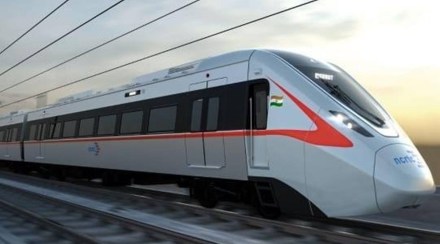The National Capital Region Transport Corporation (NCRTC) is planning to establish a network of regional rapid transit systems in the NCR that will be integrated with the Delhi Metro’s various lines. These will also connect various cities such as Alwar, Panipat, and Meerut to Delhi.
While a metro is a public transportation system that operates in the national capital, an RRTS train is designed to provide faster and more convenient travel between various cities surrounding the national capital.
Come March, the first Rapid Rail Transit System (RRTS), with facilities like an aeroplane, will start its service, connecting Sahibabad in Ghaziabad to Duhai Depot. The 17-kilometre long-running stretch of the train will cover Sahibabad, Ghaziabad, Guldhar, Duhai and Duhai depots at an operational speed of 180 km per hour
The Delhi Metro Rail Corporation (DMRC) will provide feeder and dispersal services to regional transportation. RRTS is pegged to become the new high-speed, high-capacity dedicated rail service connecting regional nodes in the NCR region.
How RRTS will be different from the Delhi metro or railways
Unlike Railway stations where tickets are purchased online or at the counter and metro stations where smart cards or tokens are used, RRTS will provide QR code-based digital and paper ticketing facilities. Stations will also have Automatic Fare Collection gates and National Common Mobility cards.
The RRTS trains are designed to run at a speed of 180 kilometres per hour. They can travel up to 100 kilometres in 60 minutes. On the other hand, the Delhi Metro trains operate at a speed of 80 kilometres per hour.
Unlike the metro, RRTS is designed to cater to the needs of passengers who are looking to travel a long distance at a fast and comfortable pace. The metro, on the other hand, is designed to connect various areas within the national capital and its nearby cities.
The coaches will be equipped with adjustable chairs and there will be special arrangements for standing passengers.
RRTS will provide for free WiFi, mobile charging points, luggage storage, an infotainment system, and more.
How RRTS will change travelling in cities around NCR
The rapid rail service will reduce travel time for passengers from the nearby city of Meerut to reach the national capital in just 60 minutes. RRTS is expected to have around 800,000 daily riders.
The first phase of the RRTS project includes the construction of three corridors. These are the Delhi-Meerut, Delhi-SNB-Alwar, and Delhi-Panipat. The project’s other five lines are also expected to be launched in the next few years.
The construction of the Delhi-Meerut RRTS corridor is currently in full swing. The first phase of the project, which spans 17 kilometres, is expected to be completed in 2023.
One of the main goals of the RRTS project is to relieve the traffic congestion in the national capital. Through the rapid rail system, the NCR region will be able to cut down on air pollution and vehicular traffic.
